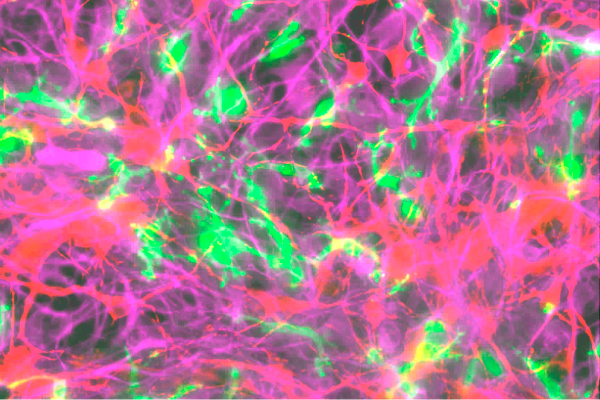
We utilize complex tri-culture systems of iPSC-derived microglia, astrocytes, and neurons to model neuroinflammation.
Our advanced model using iPSC-neurons and aged iPSC-astrocytes enables the detection of neuroprotective compounds. It captures key pathological features involving alpha-synuclein and pTau, hallmarks of Parkinson’s and Alzheimer’s.
Inducing an antioxidant-deficient condition leads to oxidative stress in iCell® Motor Neurons, which results in neurodegeneration. Explore detailed information on our ALS disease model.
We develop customized assay models tailored to your research needs. Connect directly with our scientists to learn more.

- Assay model establishment by co-culturing neural cells
- Running assays
- Mechanism analysis and target screening by gene expression network and pathway analysis
- Target validation by gene knockdown
Fujifilm initiated its drug discovery research for central nervous system (CNS) disorders following the acquisition of Toyama Chemical Co. Ltd. in 2008. Fujifilm developed advanced drug evaluation systems utilizing human iPSC-derived neural cells and innovative gene network analysis techniques. In 2015, Fujifilm further enhanced its expertise in human iPSC-derived cells through the acquisition of Cellular Dynamics, Inc. Since 2023, Fujifilm has introduced drug discovery support services, leveraging its extensive experience and advanced technical platforms, particularly in CNS disorders.
- Alzheimer’s disease
- Parkinson’s disease
- Amyotrophic Lateral Sclerosis (ALS)
- Neuroinflammation
- Neurodegeneration
- Pain
We utilize human iPSC-derived neural cells for CNS drug discovery, focusing on neurodegeneration and neuroinflammation. Our proprietary cellular aging and tri-culture technologies enable customized HTS pharmacological assay services tailored to your needs.
- Human iPSC-derived Neuron cells (GABA, Gluta, Dopa, Motor)
- Human iPSC-derived Microglia
- Human iPSC-derived Astrocytes
- Additional iPSC models and custom
- 2D & 3D models in Mono-, Co- and Tri-culture
- Neuroinflammation in tri-culture models
- Oxidative stress-induced neuronal damage model
- Neurotoxic astrocyte model
- Custom models based on your needs
- BBB models
- High-content imaging analysis
- High Throughput Screening
- qRT-PCR & Digital PCR
- ECL-ELISA (MSD assays)
- Electrophysiology (MEA)
- Calcium Imaging
- Cytokine Release/Profiling
- RNAi screening
- Gene regulation
- Transcriptome analysis
- Gene Network analysis and MOA
- Cell morphology and cellular localization analysis
- EV extraction
- Autophagy/mitophagy assay
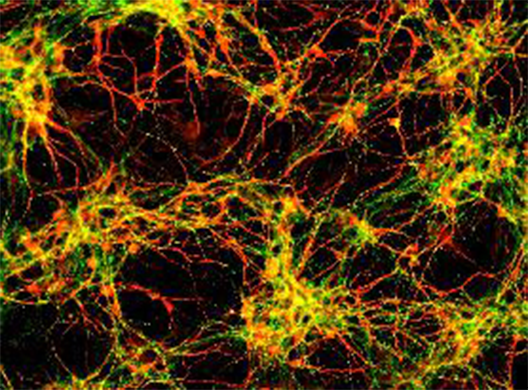
Neuron (MAP2) Synapse (Synapsin1)
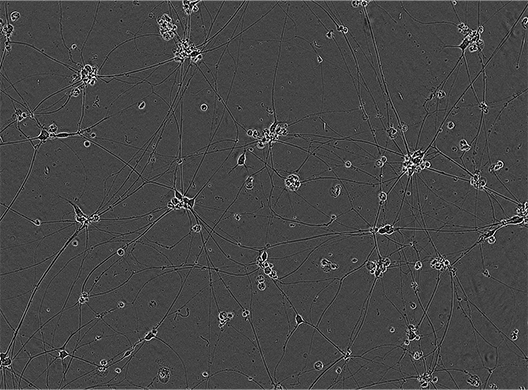
Neurite outgrowth assay
- Aβ phagocytosis assay
- Neurite outgrowth assay
- Astrocyte neurotoxicity assay
- TDP-43 aggregation
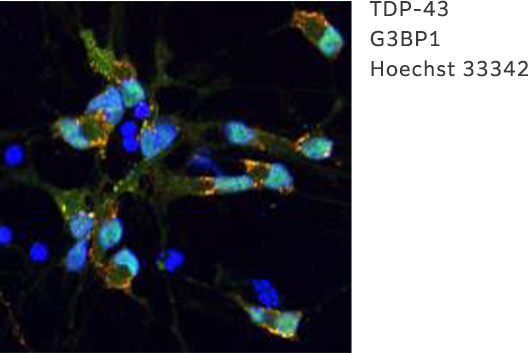
TDP-43 aggregation
- pTau assay
- α-Synuclein assay and more
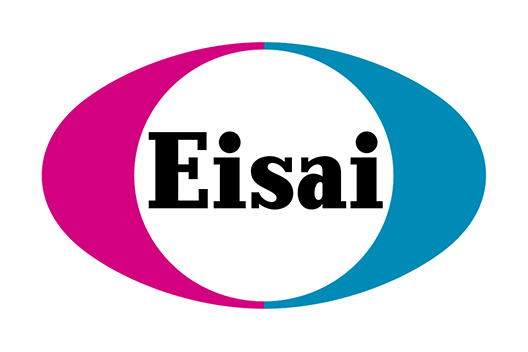
- Tau aggregation induces cell death in iPSC-derived neurons (Aging Brain Volume 7, 2025, 100136)
Hirokazu Tanabe, Sumihiro Maeda, Etsuko Sano, Norio Sakai, Setsu EndohYamagami, Hideyuki Okano - MAPT-A152T mutation drives neuronal hyperactivity through Fyn-NMDAR signaling in human iPSC-Derived neurons: Insights into Alzheimer's pathogenes (Regenerative Therapy Volume 28, March 2025, Pages 201-213)
Maika Itsuno, Hirokazu Tanabe, Etsuko Sano, Takashi Sasaki, Chisato Oyama, Hiroko Bannai, Koichi Saito, Kazuhiko Nakata, Setsu Endoh-Yamagami, Hideyuki Okano, Sumihiro Maeda - Neuronal Damage Induced by Gradual Oxidative Stress in iPSC-Derived Neurons: Implications for Ferroptosis Involvement and ALS Drug Evaluation (Journal of Neurochemistry, Vol.169, 2025, e70246)
Hayato Kobayashi, Hitoshi Suzuki-Masuyama, Hirokazu Tanabe, Hiroshi Kato, Setsu Endoh-Yamagami
- Ferroptosis-dependent neuronal damage induced by oxidative stress and TDP-43 aggregation formation in iPSC-motor neurons as ALS models (Hayato Kobayashi, Hitoshi Suzuki-Masuyama, Hirokazu Tanabe, Hiroshi Kato, and Setsu Endoh-Yamagami)
- iPSC-derived senescent astrocytes generate inflammation prone environment and they are more sensitive to cytokines inducing a neurotoxic state (H. Kobayashi, T. Wakui, H. Kato, S. Endoh-Yamagami)
- Ferroptosis-dependent neuronal injury induced by oxidative stress in iPSC-derived motor neurons as ALS model (H. Kobayashi, H. Suzuki-Masuyama, H. Tanabe, H. Kato, S. Endoh-Yamagami)
- Study of glial function on neuronal activity under neuroinflammation in neuron/astrocyte/microglia tri-culture system (H. Kobayashi, H. Kato, S. Endoh-Yamagami)
- Evaluation system for seizure risks using a co-culture system consisting of human iPS cell-derived neurons and astrocytes (M. Taniguchi, H. Kobayashi, S. Endoh-Yamagami)
- Neurotoxic human iPSC-astrocytes and gene expression network analysis to identify drug targets for neurodegenerative diseases (Hayato Kobayashi, Kiyohiro Maeda, Kenichi Kazetani, Akira Nabetani, Setsu Endoh-Yamagami)
- 2D and 3D tri-culture systems for investigation of cellular interaction among neurons, astrocytes, and microglia (Hayato Kobayashi, Setsu Endoh-Yamagami)
- Induction and characterization of human A1 astrocytes (H. Kobayashi, A. Nabetani, H. Suzuki-Masuyama, W. Shin, K. Maeda, K. Kazetani, T. Wakui, J. Hosokawa, S. Endoh-Yamagami)
